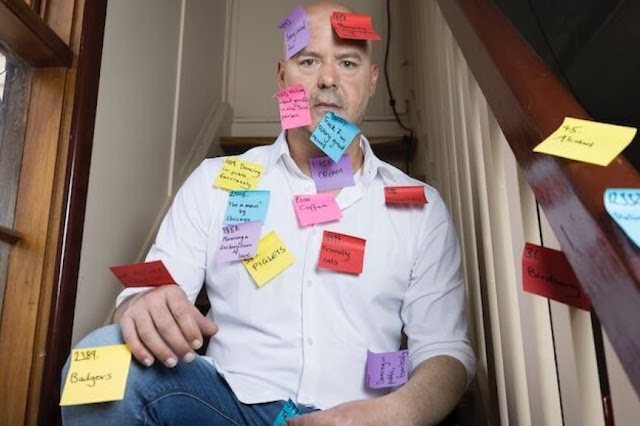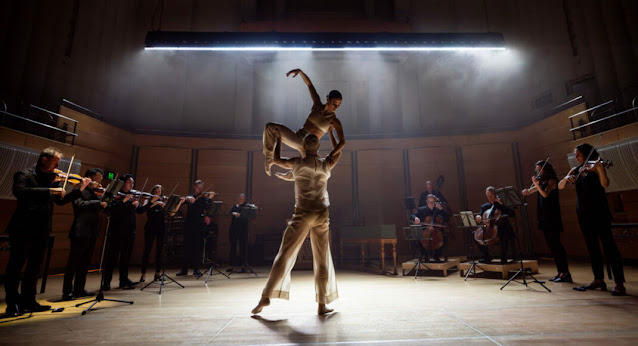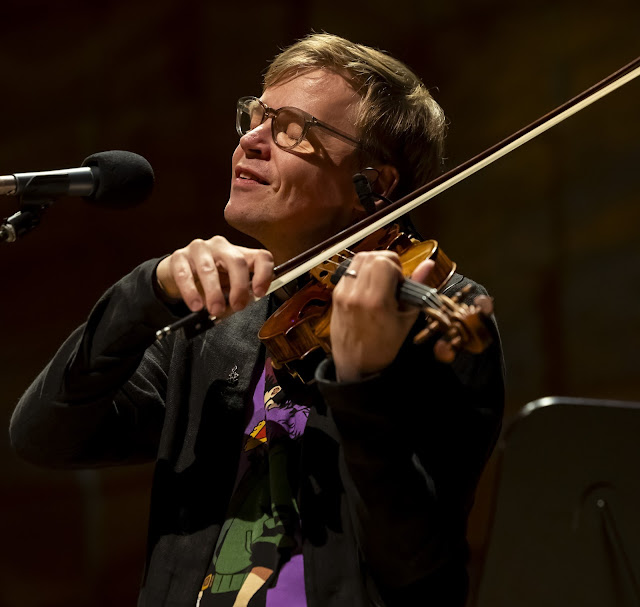 |
| Casey Donovan as Deloris Van Cartier, leading the nuns in "Sister Act". |
Music by
Alan Menken – Lyrics by Glenn Slater – Book by Cheri & Bill Steinkellner
Directed by
Bill Buckhurst – Choreographed by Alistair David
Musical
Direction by Daniel Griffin – Set and Costumes design by Morgan Large
Lighting
Designed by Tim Mitchell – Sound Designed by Tom Marshall
Capitol
Theatre, Sydney until 26th October 2024.
Opening
night performance on 11th August, 2024 reviewed by BILL STEPHENS
 |
| Casey Donovan as Deloris Van Cartier in "Sister Act". |
Based on the
popular 1992 film of the same name, which famously starred Whoopi Goldberg, this
somewhat bowdlerised stage musical version tells the story of a nightclub
singer, Deloris Van Cartier, who takes refuge in a struggling convent in an
effort to escape her gangster boyfriend
after she inadvertently witnessed him commit a murder.
While
masquerading as a nun she introduces the convent’s choir to the joys of Rock ‘n
Roll. The choir rapidly becomes famous, and to the chagrin of the Mother
Superior, pays off the convent’s debt and earns an invitation to sing for the
Pope. The resultant fame also reveals Deloris’ whereabouts to her murderous
boyfriend, Curtis.
Whatever
charm this story originally possessed seems to have been lost in translation
from film to stage musical, because the musical seems rather less interested in
the storytelling than the opportunity it provides for a series of slickly
staged musical numbers.
However
Sister Act provides Casey Donovan, with her first starring role as a bonafide
musical theatre leading lady and she grabs that opportunity with both hands.
Donovan has
been steadily building an impressive career, and a large following, as a
recording artist and television personality. Since winning the television
talent-show Australian Idol at the age of 16, Donovan has been gathering
plaudits for her performances in a succession of major musicals including The
Sapphires, Rent, We Will Rock You, Chicago, 9 to 5, and most recently, &
Juliet.
The score of
Sister Act is packed with toe-tapping rock-inspired songs by Alan Menken and
Glenn Slater. These songs are perfect for the ebullient personality and
powerhouse voice of Donovan, who revels in the opportunities they offer to blow
the roof off the Capitol Theatre.
There are
lovely harmonies for the Nun’s choir, cute song and dance numbers for Curtis
and his henchmen, and thoughtful ballads for the Mother Superior (Genevieve
Lemon) and Sister Mary Robert (Sophie Montague). Though few of the songs are
memorable beyond the finale, this show has a spectacular Mardi Gras finale
which demands, and gets, the now obligatory standing ovation.
 |
| Genevieve Lemon as Mother Superior in "Sister Act" |
However, beyond
the spectacular settings, the dazzling lighting design and excellent band, all
the directorial attention seems to have been lavished on staging the numbers,
rather than telling the story that should hold them together.
Donovan is
fabulous while singing and being Casey Donovan, but surprisingly she hasn’t yet
learnt how to create a character beyond her own persona, and when leading a
musical one wants to care about the character the leading lady is portraying,
as well as admire the skill of the actor portraying that character. Hopefully Donovan will master this skill as
the run settles in, because she has the potential to become an extraordinary
leading lady.
Hopefully
too, the nuns will also work on their characterisations because on opening
night they were so busy trying to out-silly each other in the first act that
none made any impact as characters. Even the usually excellent Rhonda Burchmore
seemed at a loss to inject any individuality into her Sister Mary Lazarus.
 |
| Rhonda Burchmore as Sister Mary Lazarus in "Sister Act" |
They could
learn a lot by taking their cues from newcomer Sophie Montague as the young
Sister Mary Robert, and Genevieve Lemon, superb as the Mother Superior, not
only because they are costumed differently from the others, but because both
have created characters who are believable and consistent.
Beyond those
Raphael Wong as Eddie Souther charmed with his performance of I Could Be That
Guy, and James Bell stole scenes at every opportunity as TJ. Elsewhere the cast tended to overact with
enthusiasm while delivering their allotted lines efficiently.
And talking
of costumes, could someone arrange for Morgan Large to replace the unflattering
outfit he has Casey Donovan wear in the first act. Obviously it was made for her, but as
evidenced in the program, not designed with her in mind. Donovan is proud of
her Big, Beautiful and Sexy figure and has every right to be. She can look
magnificent, and indeed does so in her finale costume, but this costume does
her no favours.
 |
Rhonda Burchmore and the nuns in the finale of "Sister Act".
Photos by Daniel Boud.
This review first published in the digital edition of CITY NEWS on 14th August 2024. |






























,%202024,%20Digital%20video%20(photos%20by%20Andrew%20Sikorski),%201%E2%80%9900%E2%80%9D%20duration.jpg)
,%20dimensions%20variable,%20photo%20by%20Brenton%20McGeachie.tif)
,%20dimensions%20variable,%20Photo%20by%20Brenton%20McGeachie.tif)
'%202023,%20Inkjet%20on%20archival%20cotton%20rag,%2084%20x%2061.4cm,%20Photo%20by%20Brenton%20McGeachie.jpg)

,%202024,%20Photo%20by%20Brenton%20McGeachie.jpg)